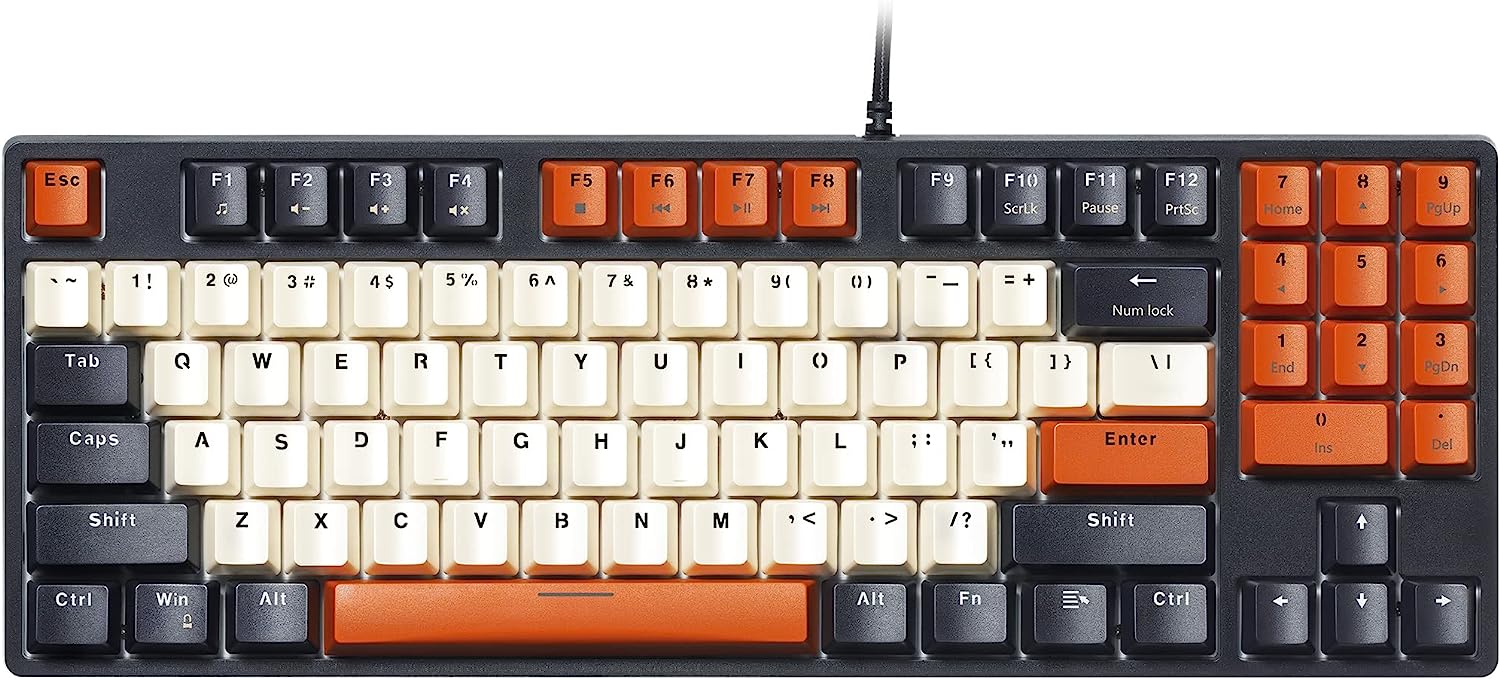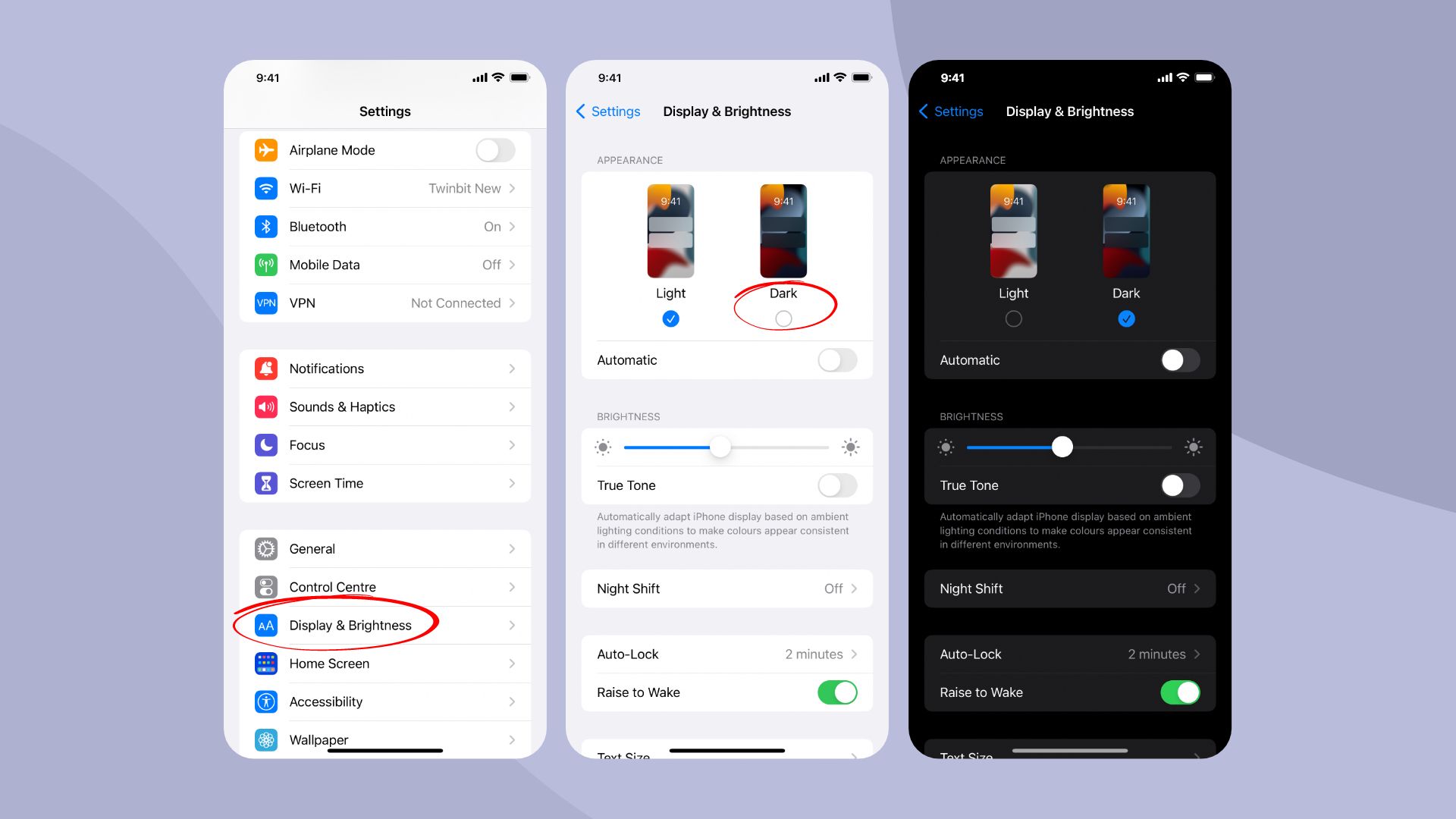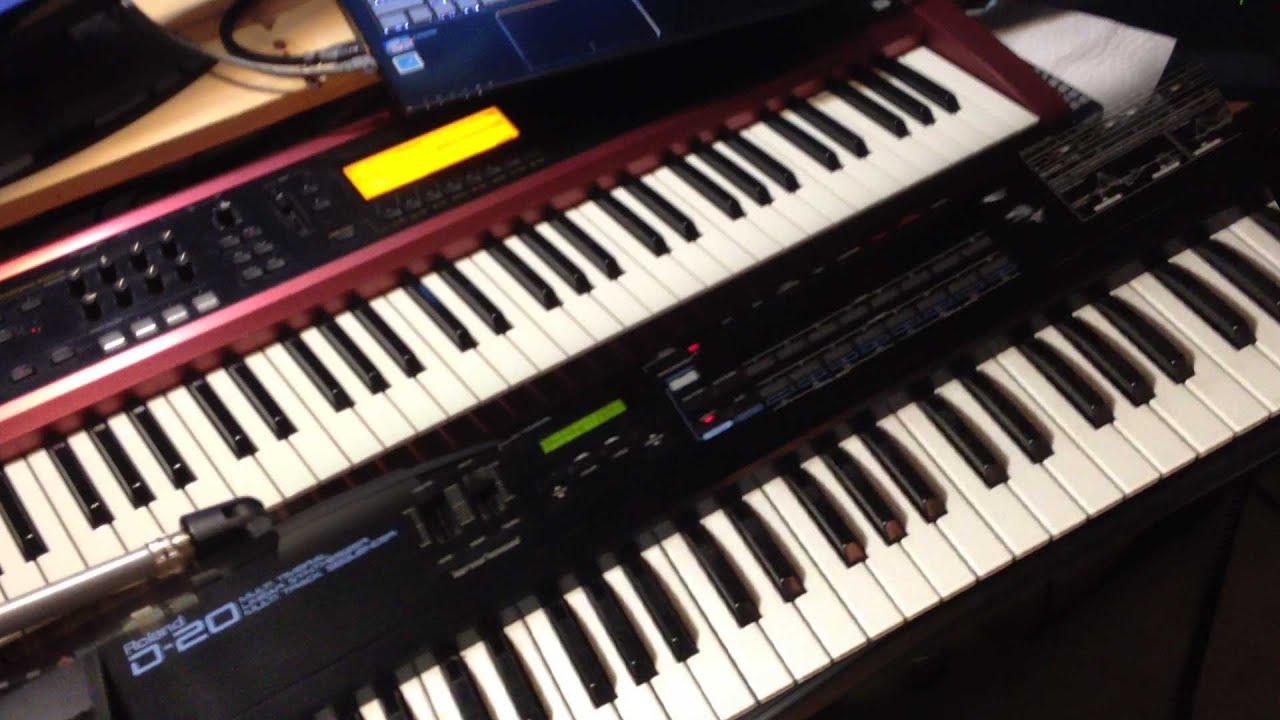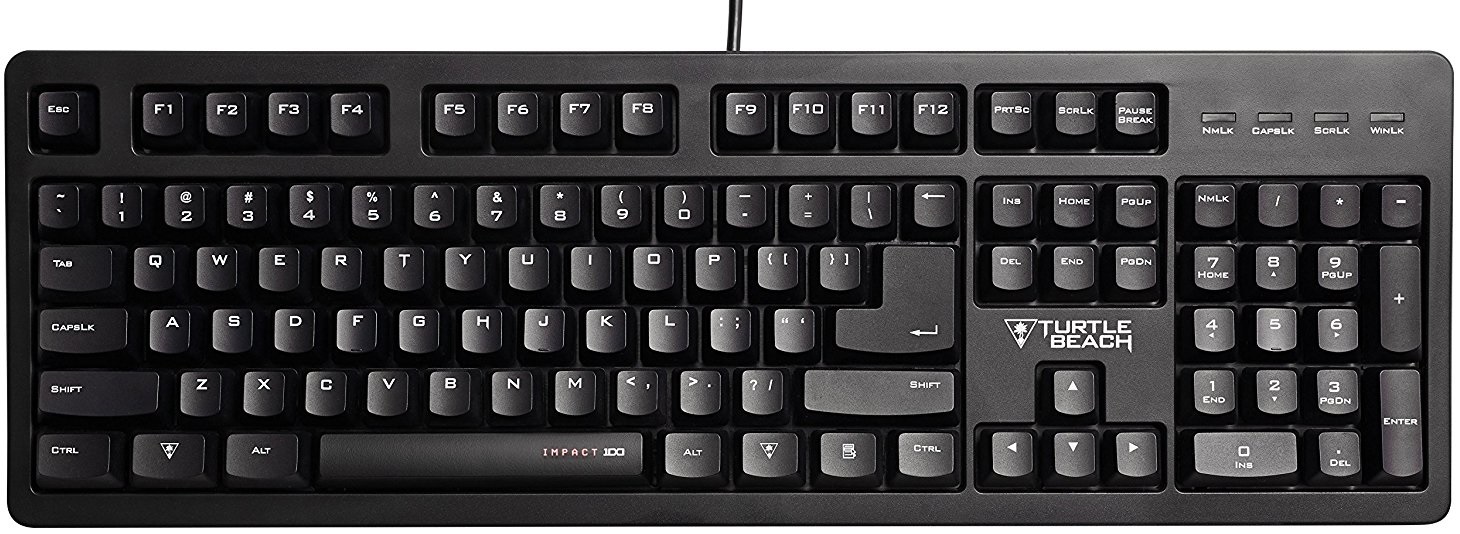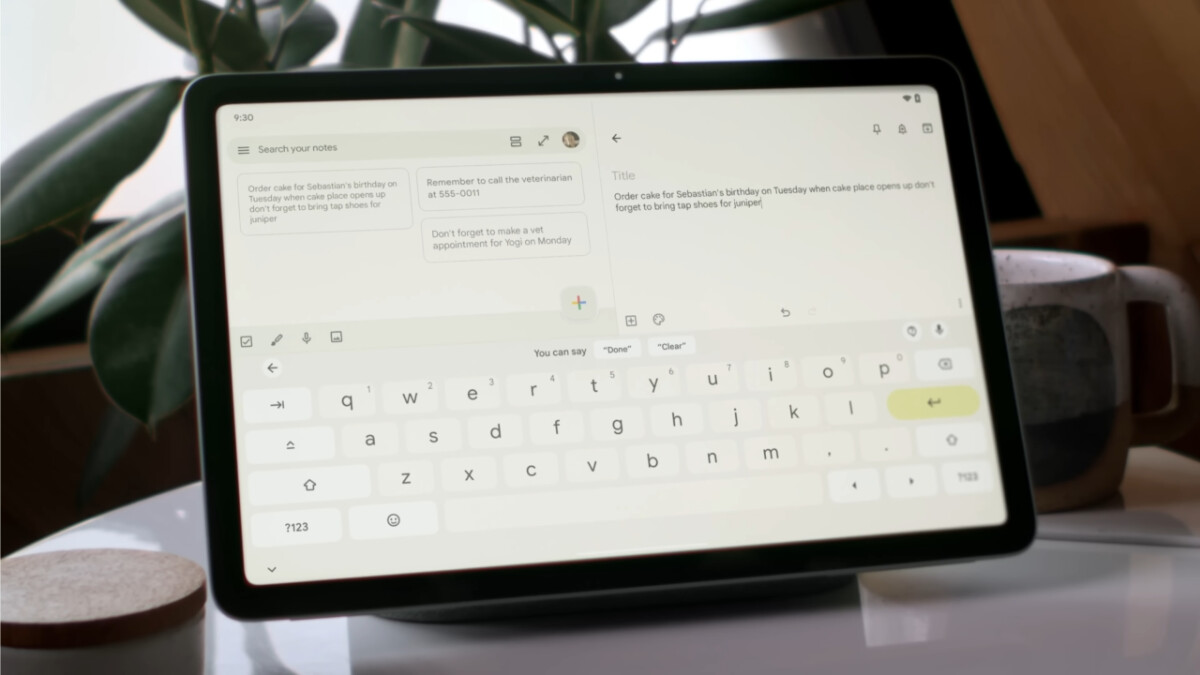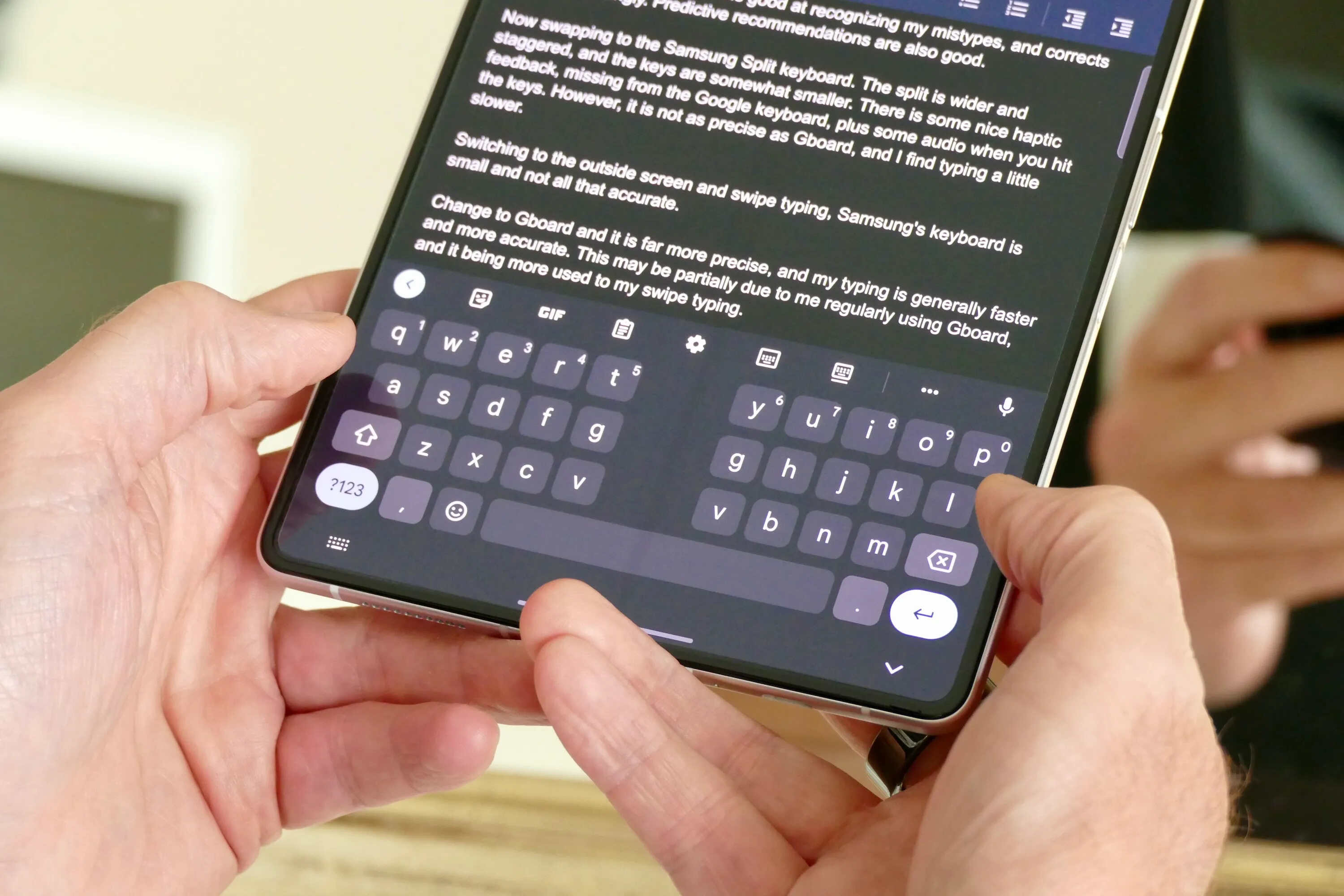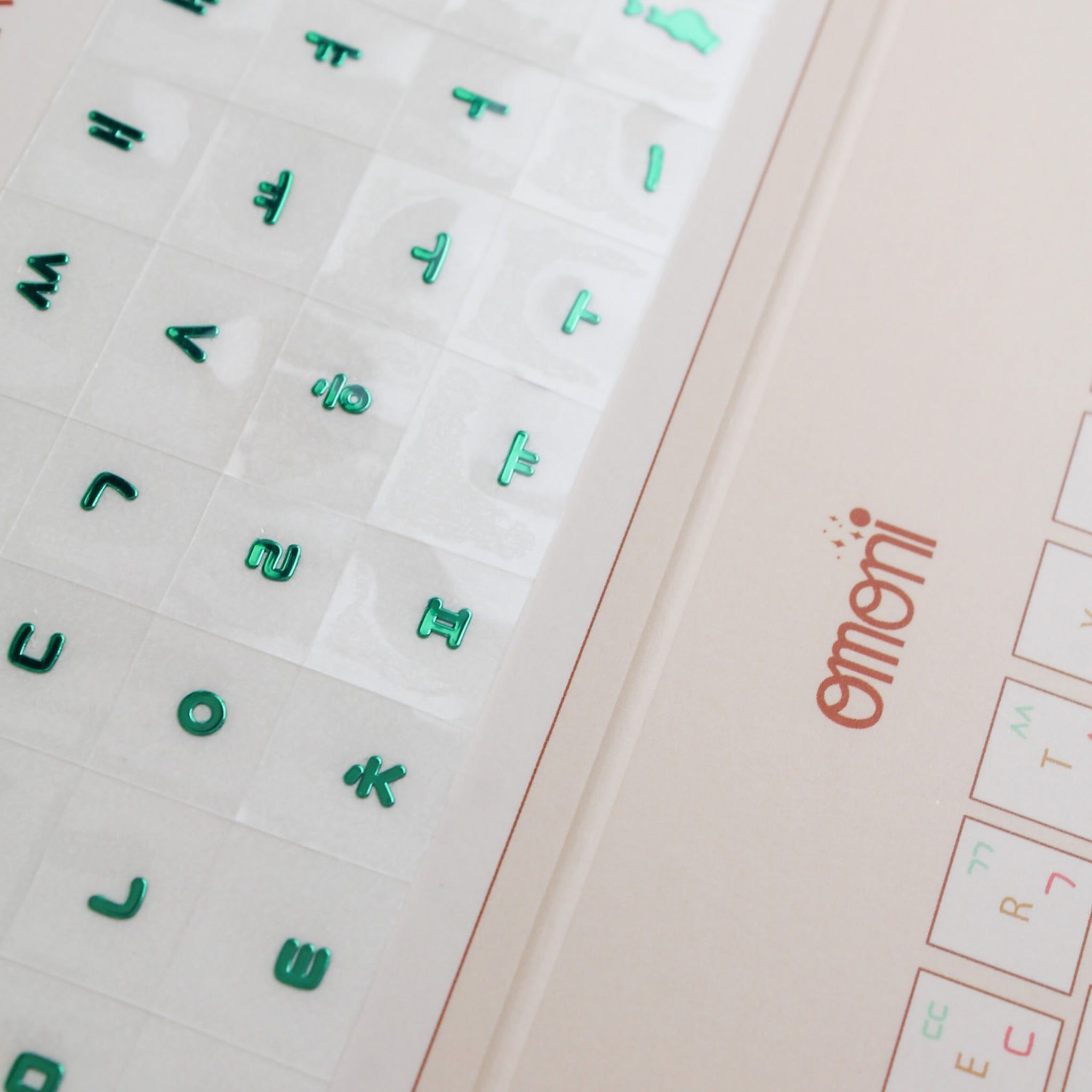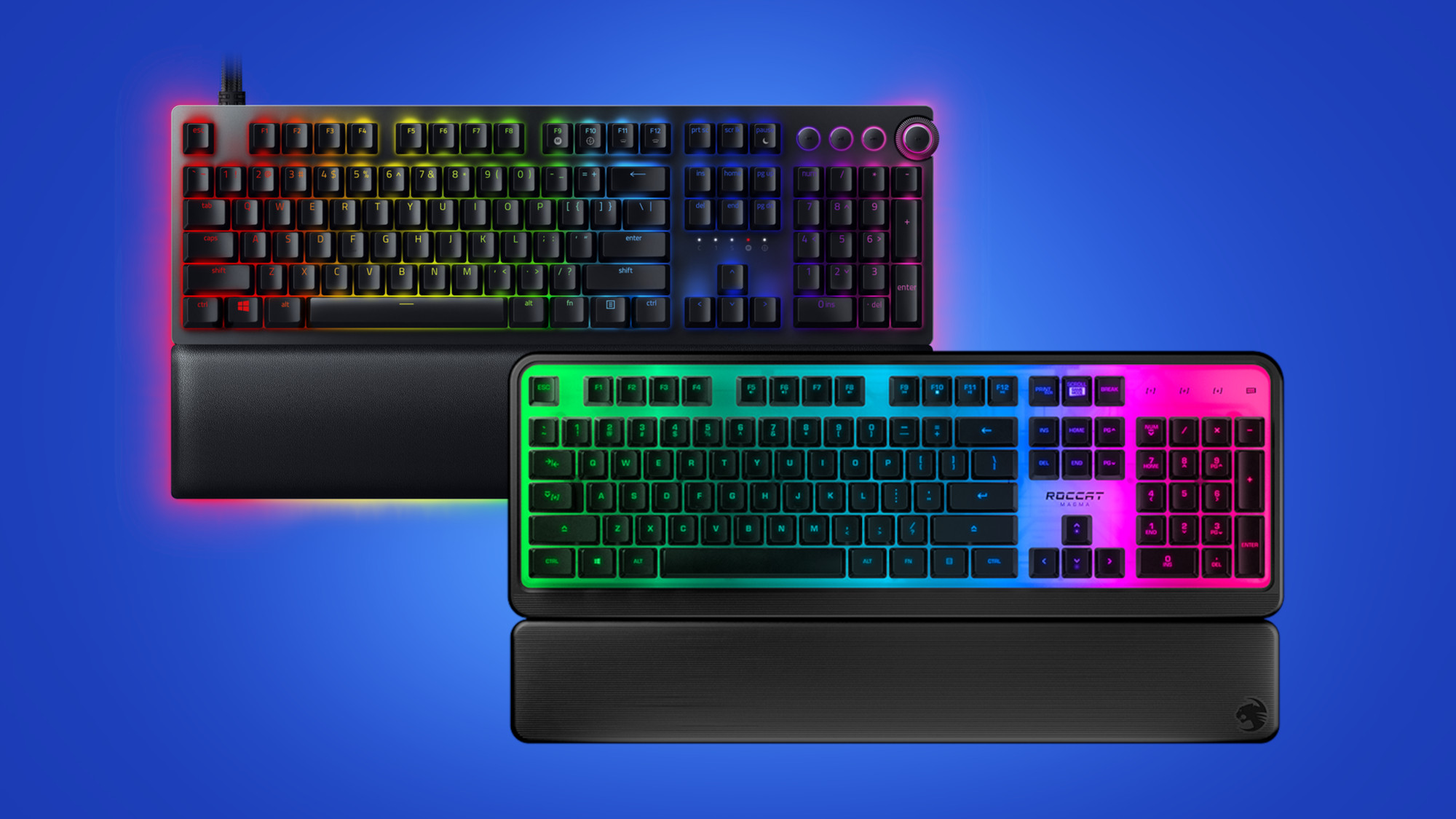Introduction
Have you ever wondered where all the characters and symbols on your keyboard are located? Whether you’re a seasoned typist or just starting out, knowing the layout of a keyboard is essential for efficient and accurate typing. Keyboards come in various shapes and sizes, but most follow a standard layout with slight variations. In this article, we’ll explore the different sections and keys on a typical keyboard to help you become more familiar and confident with your typing skills.
The keyboard is divided into several sections, each with its own set of keys. The top row, often referred to as the QWERTY row, is where you’ll find the letters Q, W, E, R, T and Y, along with the numbers 1 to 0. This row is commonly used for typing words and numbers, making it the most frequently used row on the keyboard. The middle row, consisting of the letters A, S, D, F, and G, is often used for quick access to common keyboard shortcuts in various software applications. The bottom row, home to the letters Z, X, C, V, and B, is typically used for functions like copy and paste.
The shift key, located on both sides of the keyboard, is essential for typing capital letters and accessing secondary characters on each key. By holding down the shift key while pressing a letter or symbol, you can type uppercase letters or special characters such as exclamation marks or percentage signs. The shift key is an important tool for proper punctuation and formatting in your written communication.
In addition to the standard alphabetical and numerical keys, your keyboard may also have special characters located above the number row. These characters include the at symbol (@), dollar sign ($), and percent symbol (%). They often require the use of the shift key or another modifier key to access. Knowing the location of these special characters can save you time and frustration when typing emails, URLs, or other forms of digital communication.
For those working heavily with numbers, many keyboards also have a numeric keypad on the right side. This keypad can be used to quickly input numerical data, perform calculations, or navigate spreadsheets. The keys on the numeric keypad are arranged in a similar layout to a calculator, with numbers 0-9 and additional symbols like +, -, *, and /.
Function keys, labeled F1 through F12, are located at the top of the keyboard. These keys have different functions depending on the software or application you are using. They can be used for accessing help, opening menus, or performing specific actions within a program. Familiarizing yourself with the function keys can make navigating through software much easier.
Lastly, we have the arrow keys, located in an inverted T shape at the bottom right corner of the keyboard. These keys are used for navigating within documents, web pages, spreadsheets, or any other content where movement is required. The arrow keys allow you to move up, down, left, or right without having to use the mouse.
Modifier keys, including the Control (Ctrl), Alt, and Windows (or Command) keys, are additional keys that modify the function of other keys when pressed in combination. They are commonly used for executing shortcuts and special commands in various applications. Understanding how to utilize these modifier keys can significantly enhance your productivity and ease of use.
Now that you have a better understanding of the different sections and keys on a keyboard, you can confidently improve your typing speed and accuracy. Whether you’re writing an email, creating a document, or playing a game, knowing the layout of your keyboard will help you navigate and perform tasks with ease.
Top Row: Q-W-E-R-T-Y
The top row of the keyboard, often referred to as the QWERTY row, is where you’ll find the letters Q, W, E, R, T, and Y, along with the numbers 1 to 0. This row is crucial for typing words, numbers, and accessing various symbols and punctuation marks.
The QWERTY arrangement is the standard layout for most keyboards and is named after the first six letters in the top row. This layout was originally designed for typewriters in the late 19th century and has remained popular ever since. It may seem random, but there was actually a method to the madness. The QWERTY layout was designed to reduce the likelihood of key jams by spacing out commonly used letter combinations.
Typically, the letters Q, W, E, and R are used for typing words more frequently due to their placement on the left side of the top row. These letters are often found in common English words and are easily accessible for touch typing. The letters T and Y, on the other hand, are commonly used for words that end in -T and -Y, respectively.
In addition to letters, the top row also features numbers from 1 to 0, which are essential for numerical input and calculations. These numbers can be used in a variety of applications, such as spreadsheets, accounting software, or simply when you need to input numerical information quickly.
Moreover, the top row houses several symbols and punctuation marks that can be accessed by using the shift key in combination with the respective key. For example, by pressing the shift key and the number 1 key, you can type the exclamation mark (!). Similarly, pressing the shift key and the number 2 key accesses the at symbol (@), and so on.
Understanding the layout of the top row is crucial for efficient typing and navigating through various software applications. Whether you’re typing a document, sending an email, or chatting with friends, the top row keys are integral to your typing experience.
To master the top row, it’s essential to practice touch typing, a technique where you memorize the keyboard layout and type without looking at your fingers. This can significantly improve your typing speed and accuracy. Numerous online resources and typing programs are available that offer lessons and exercises to help you become proficient in touch typing.
Overall, the top row of the keyboard plays a vital role in typing words, numbers, and accessing symbols. With practice and familiarity, you’ll be able to navigate this row effortlessly, enhancing your overall typing efficiency and productivity.
Middle Row: A-S-D-F-G
The middle row of the keyboard consists of the letters A, S, D, F, and G. This row is often used for quick access to common keyboard shortcuts and commands in various software applications.
The layout of the middle row is designed for easy access to important keys while typing. The position of the letters A and S, located on the left side of the row, allows for comfortable placement of your fingers without straining your hand. These letters are commonly used in many words and are easily accessible when typing.
The letters D, F, and G, positioned in the center of the row, also play a significant role in touch typing. These keys are typically assigned to the index and middle fingers of your dominant hand. They are positioned to facilitate smoother finger transitions and reduce the chances of mistyping.
In addition to their role as letters, the middle row keys are often assigned as shortcuts or hotkeys in various software applications. For example, pressing Ctrl + S on your keyboard can quickly save a document, while Ctrl + A selects all content within a file or document. These shortcuts can be a huge time-saver and can greatly improve your efficiency when working with different programs.
Furthermore, the middle row is home to other important keys such as the semi-colon (;) and the apostrophe (‘), which are commonly used in writing and programming. Additionally, the letter G often serves as a shortcut for the “Go to” function in many software applications, allowing users to jump to specific sections or lines within a document or code.
Mastering the middle row and becoming familiar with its layout and shortcuts can greatly enhance your typing speed and productivity. By knowing the location of commonly used letters and shortcuts, you can save valuable time and reduce the need to constantly switch between the keyboard and mouse.
Practicing touch typing with the middle row can help you become more efficient and accurate in your typing. By training your fingers to know the exact placement of each key, you can type effortlessly without the need to look at the keyboard.
Overall, the middle row of the keyboard provides convenient access to commonly used letters and shortcuts. By familiarizing yourself with the layout and practicing touch typing, you can greatly improve your typing efficiency and navigate through software applications with ease.
Bottom Row: Z-X-C-V-B
The bottom row of the keyboard consists of the letters Z, X, C, V, and B. This row is often used for various functions and commands, including copy and paste, as well as accessing additional symbols and punctuation marks.
The position of the bottom row keys is designed to allow for easy access without straining your hand. The letter Z is typically pressed with your left pinky finger, while the letters X, C, V, and B are pressed with the adjacent fingers on your left hand.
One of the most commonly used functions on the bottom row is the copy and paste command. The letter C is often associated with copying, while the letter V is used for pasting. This feature allows you to easily duplicate or transfer content within documents, emails, or other applications.
In addition to their functions, the bottom row keys can also be utilized to access various symbols and punctuation marks. For example, by holding down the shift key and pressing the letter Z key, you can type the question mark (?). The letter X is often used to access the colon (:) and semicolon (;) symbols. The letter B is associated with the comma (,), while the letter V is commonly used to type the period (.) or full stop.
In some software applications, the letter C may be used as a shortcut for the “cancel” command, allowing you to quickly abort or undo a particular action. The letter X can also be used in some applications to cut or delete selected content.
Furthermore, the bottom row keys might have additional functions or shortcuts assigned in specific software programs or games. For instance, in certain video games, the letter Z might be used for crouching or interacting with objects in the game world.
Mastering the bottom row of the keyboard is essential for efficient typing and navigating through software applications. By familiarizing yourself with the functions and shortcuts associated with these keys, you can streamline your workflow and enhance your productivity.
Practicing touch typing with the bottom row can help you become more proficient and precise in your typing. By training your fingers to know the exact placement of each key, you can type effortlessly and accurately without having to look at the keyboard.
Overall, the bottom row of the keyboard serves multiple functions, including copy and paste, accessing symbols, and performing various commands in different software applications. By becoming familiar with these keys and practicing touch typing, you can increase your typing efficiency and navigate through software with ease.
The Shift Key
The shift key is a fundamental key on the keyboard that serves multiple purposes. Located on both sides of the keyboard, typically beneath the enter key, the shift key plays an essential role in typing uppercase letters and accessing secondary characters or symbols on each key.
When typing, pressing and holding down the shift key while pressing a letter key allows you to type the corresponding uppercase letter. This is necessary for proper capitalization in sentences, headings, and proper nouns. For example, pressing the shift key and the letter “D” simultaneously produces the uppercase letter “D” on the screen.
In addition to typing uppercase letters, the shift key also provides access to secondary characters or symbols on each key. By pressing and holding down the shift key while pressing a specific key, you can input characters such as exclamation marks, quotation marks, question marks, and more. These secondary characters are usually depicted in different colors or symbols on the keyboard and require the use of the shift key to access.
The shift key is incredibly versatile and can be used to modify the function of various keys. For example, pressing the shift key and the number 3 key simultaneously allows you to type the pound sign (£) on some keyboards or the hashtag symbol (#) on others. Similarly, holding down the shift key while pressing the number 2 key can input the at symbol (@), which is commonly used in email addresses and social media handles.
Furthermore, the shift key is often used in combination with other modifier keys to execute more advanced functions. For instance, pressing the shift key and the Ctrl key simultaneously can create a capital letter with an accent or diacritical mark, useful for typing characters found in foreign languages.
Understanding and properly using the shift key is essential for accurate and efficient typing. It allows you to write with proper capitalization, access a wide range of symbols, and modify the function of certain keys. By becoming proficient in using the shift key, you can improve your overall writing consistency and productivity.
When learning to touch type or improving your typing skills, it is beneficial to practice hitting the shift key without needing to look down at the keyboard. This will help you develop muscle memory and increase your typing speed.
In summary, the shift key is a vital component of the keyboard that facilitates typing uppercase letters, accessing secondary characters, and modifying key functions. By mastering the use of the shift key, you can enhance your typing proficiency and accuracy while navigating through various characters and symbols on the keyboard.
Special Characters
Special characters play a crucial role in typed communication, adding clarity, expressiveness, and context to our writing. These characters include symbols, punctuation marks, and other characters that may not be readily available on the standard keyboard layout. Let’s explore how to access and utilize these special characters.
Most special characters can be accessed using keyboard shortcuts or by using the “Alt” or “Option” key in combination with other keys. For example, pressing the “Alt” key along with the number keys on the numeric keypad allows you to enter special characters based on their corresponding decimal or hexadecimal code. This method is particularly useful for displaying characters that are not available on the main keyboard layout.
Along with the numeric keypad, the special characters can also be accessed by using the “Alt Gr” key (found to the right of the spacebar on some keyboards) along with other keys on the keyboard. The “Alt Gr” key is specifically designed to generate additional characters or symbols in various languages and keyboard layouts.
Another way to access special characters is through the character map or symbol viewer feature available in most operating systems. These tools provide a visual interface where you can browse and select the desired special characters. Once selected, you can insert them into your document or text field.
The special characters available may vary depending on the language, software application, or operating system you are using. Some common special characters include currency symbols like the dollar sign ($), the Euro symbol (€), and the British pound sign (£). Additionally, there are special characters for copyright (©), trademark (™), and registered trademark (®) symbols, along with mathematical symbols, arrows, and Emojis.
Using special characters in your writing can enhance its clarity and visual appeal. For example, using quotation marks, parentheses, or brackets can help indicate quotations, clarify mathematical expressions, or enclose supplementary information. Special characters like dashes, ellipses, and bullet points can provide structure and emphasis to your text.
It’s worth noting that special characters may have different meanings or purposes in different contexts. Therefore, it’s essential to use them thoughtfully and appropriately for maximum impact.
Familiarizing yourself with different special characters and their respective shortcuts can greatly improve your typing efficiency. By incorporating these characters into your writing, you can enhance the expression and readability of your text, making it more engaging and visually appealing to your readers.
In summary, special characters are an integral part of typed communication, allowing for added clarity, symbolism, and emphasis. By utilizing keyboard shortcuts, special character maps, or symbol viewers, you can access a wide array of special characters to enhance your writing and effectively convey your message.
Numeric Keypad
The numeric keypad is a group of keys located on the right side of a keyboard. It is typically used for number input, calculations, and navigating through spreadsheets or accounting software. The numeric keypad is designed to replicate the layout and functionality of a traditional calculator, making it convenient for efficient numerical entry.
The numeric keypad consists of digits from 0 to 9, arranged in a grid format, along with additional keys for mathematical operations such as addition (+), subtraction (-), multiplication (*), division (/), and decimal point (.). These keys allow for quick and accurate numerical input, saving time and effort for tasks that involve extensive use of numbers.
When working with numbers, the numeric keypad provides the advantage of allowing one-handed input, freeing up your other hand for mouse navigation or other tasks. This can be especially beneficial for data entry, accounting, or any task that requires frequent numerical input.
In addition to basic number input, the numeric keypad can also offer advanced functionality in specific applications. For instance, in spreadsheet programs like Microsoft Excel, the numeric keypad can be used for navigating cells, selecting ranges, and performing calculations with formulas. The Enter key on the numeric keypad is often used to confirm data entry or execute a formula.
The numeric keypad is a versatile tool that can save time and streamline numerical tasks. Learning and practicing its layout can significantly enhance your productivity when working with numbers and calculations. Employing efficient numeric keypad techniques, such as touch typing, can further improve your speed and accuracy.
It is worth noting that not all keyboards include a dedicated numeric keypad. Laptop keyboards, for example, often have a smaller, integrated numeric keypad that can be activated using a function key. These function keys are typically labeled with a numerical designation (e.g., “Num Lock”) and allow you to toggle on or off the numeric keypad functionality.
Overall, the numeric keypad is a valuable feature for anyone working extensively with numbers. Whether you need to enter data, perform calculations, or navigate through spreadsheets, the numeric keypad provides a convenient and efficient way to handle numerical tasks.
Function Keys (F1-F12)
The function keys, labeled F1 through F12, are a row of keys located at the top of the keyboard. These keys have varying functions depending on the software or application you are using, making them versatile tools for executing commands and accessing specific features.
The primary function of the function keys is to provide quick access to commonly used commands and functions within software applications. For example, the F1 key is often associated with the “Help” function, allowing users to access helpful documentation or support resources. Pressing F2 is commonly used for renaming files or objects, while F3 is associated with searching or finding items within a document or on a webpage.
Many software applications utilize the function keys for program-specific functions. For instance, in word processing software, you may find that pressing the F5 key initiates a spell check, while F7 opens a Thesaurus. In image editing software, pressing F9 may toggle a specific tool or function, while F11 can enable full-screen mode.
In addition to their predefined functions, function keys can also be customizable in certain applications or operating systems. This means that users can assign specific functions or macros to function keys based on their own preferences or workflow. This can be particularly useful for streamlining repetitive tasks or creating personalized shortcuts.
Function keys are often used in combination with other modifier keys, such as Ctrl, Alt, or Shift. These key combinations can activate additional functions or perform specific actions within software applications. For example, holding down the Fn key (function) along with an F-key can trigger predefined actions or keyboard shortcuts on laptops or compact keyboards.
It’s important to note that the functions of the function keys can vary between different software applications and operating systems. Therefore, it’s recommended to consult application-specific documentation or help resources to understand the context-specific functionality of these keys.
By familiarizing yourself with the function keys and their respective functions in the applications you use frequently, you can significantly enhance your productivity and workflow. Taking the time to explore and learn the functionality of these keys in different software applications can help you work more efficiently and access valuable features with ease.
In summary, the function keys (F1-F12) provide quick access to various functions and commands within software applications. Understanding their specific functions in the software you work with can greatly improve your workflow and productivity.
Arrow Keys
The arrow keys, consisting of the up arrow, down arrow, left arrow, and right arrow, are located in an inverted T shape at the bottom right corner of the keyboard. These keys are essential for navigating within documents, web pages, spreadsheets, or any other content where movement is required.
Each of the arrow keys serves a specific function when it comes to moving through content. The up arrow key is used to scroll or move the cursor upward, while the down arrow key is used to scroll or move the cursor downward. The left arrow key is used to move the cursor or selection to the left, and the right arrow key is used to move the cursor or selection to the right.
The arrow keys are particularly useful when working with long documents or when precision is required for selecting text or objects. They offer a convenient alternative to using the mouse or touchpad for navigating through content. Additionally, in text editors or word processing software, the arrow keys can be used to move the cursor within a document for editing or selecting specific portions of text.
Moreover, the arrow keys often come with additional functionality when used in combination with other modifier keys. For example, pressing the Shift key together with any of the arrow keys selects text or objects in the direction of the arrow, allowing for quick and precise selection. The Ctrl key, when used with the left or right arrow keys, can be used to move the cursor between words, making it easier to navigate and edit text.
In certain software applications or games, the arrow keys can have specific functions and actions assigned to them. For instance, in video games, the arrow keys can be used to control character movement or navigate through game menus. These applications or games may also allow for customization, where you can assign alternative functions or actions to the arrow keys based on your preferences.
By becoming proficient in utilizing the arrow keys, you can enhance your productivity and navigation efficiency when working with digital content. Being comfortable and familiar with the arrow keys can save time and reduce the reliance on mouse movements, contributing to a streamlined workflow.
In summary, the arrow keys on the keyboard provide a convenient way to navigate through various digital content, such as documents, web pages, or spreadsheets. Understanding their functions and utilizing them effectively can lead to improved accuracy, precision, and efficiency when working with digital content.
Modifier Keys
Modifier keys, including the Control (Ctrl), Alt, and Windows (or Command) keys, are additional keys on the keyboard that modify the function of other keys when pressed in combination. They are particularly useful for executing shortcuts, accessing special features, and performing advanced operations within software applications.
The Control (Ctrl) key is commonly found on both sides of the keyboard, usually positioned near the bottom left corner. When pressed in combination with other keys, such as letters or function keys, it can trigger specific commands or functions. For example, pressing Ctrl + C copies selected text or objects, while Ctrl + V pastes them in a new location. The Ctrl key is often employed for tasks like saving files (Ctrl + S), undoing an action (Ctrl + Z), or formatting text (Ctrl + B for bold, Ctrl + I for italic, etc.)
The Alt key, located on both sides of the keyboard, typically beside the spacebar, is another important modifier key. Similar to the Ctrl key, pressing Alt in combination with other keys can activate various functions and shortcuts. Alt key combinations often provide access to special characters, alternate menu options, or control menus in applications. For instance, Alt + Tab allows you to switch between open programs or windows on a computer.
The Windows key (on a PC) or Command key (on a Mac) is often adorned with the Windows logo or an Apple symbol, respectively. These keys are primarily used to bring up system-level actions and commands. For example, pressing the Windows key on a PC can open the Start menu, and pressing the Command key on a Mac can activate the Spotlight search feature. Additionally, the Windows key or Command key, when used in combination with other keys, can perform actions like taking screenshots, opening system preferences, or locking the computer.
The modifier keys can vary in purpose and function depending on the operating system and software applications being used. Additionally, different software programs and games may assign their own unique functions to these modifier keys.
Mastering the use of modifier keys can enhance your productivity and streamline your workflow. By utilizing keyboard shortcuts and performing various actions with these keys, you can navigate applications, access features, and perform commands more efficiently.
It’s worth noting that some keyboards may have additional or alternative modifier keys, such as the Fn key, which is commonly found on laptops. The Fn key, when used in combination with other keys, activates specific functions or secondary features assigned to certain keys.
In summary, modifier keys such as Ctrl, Alt, and the Windows or Command keys provide shortcuts and additional functionality when combined with other keys on the keyboard. Understanding and utilizing these keys effectively can greatly enhance your efficiency, navigation, and overall productivity within software applications and operating systems.







